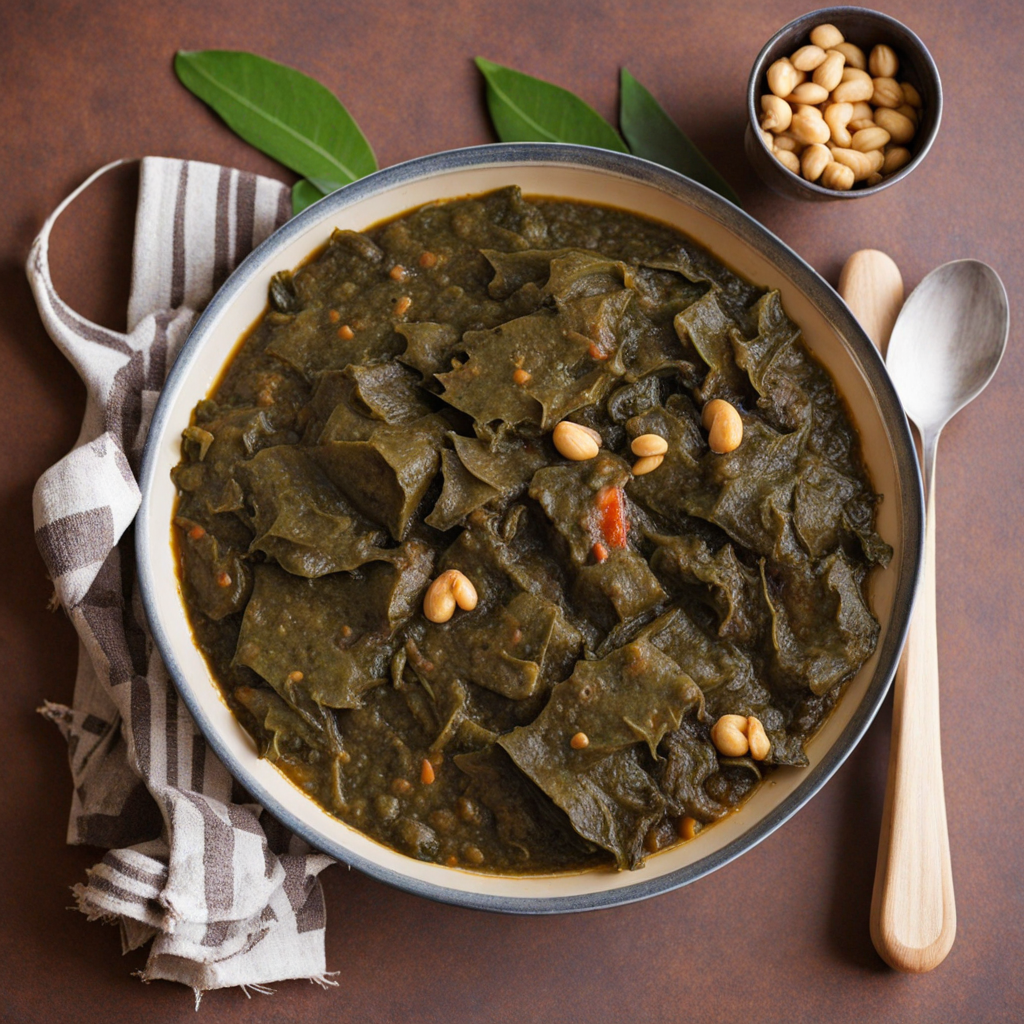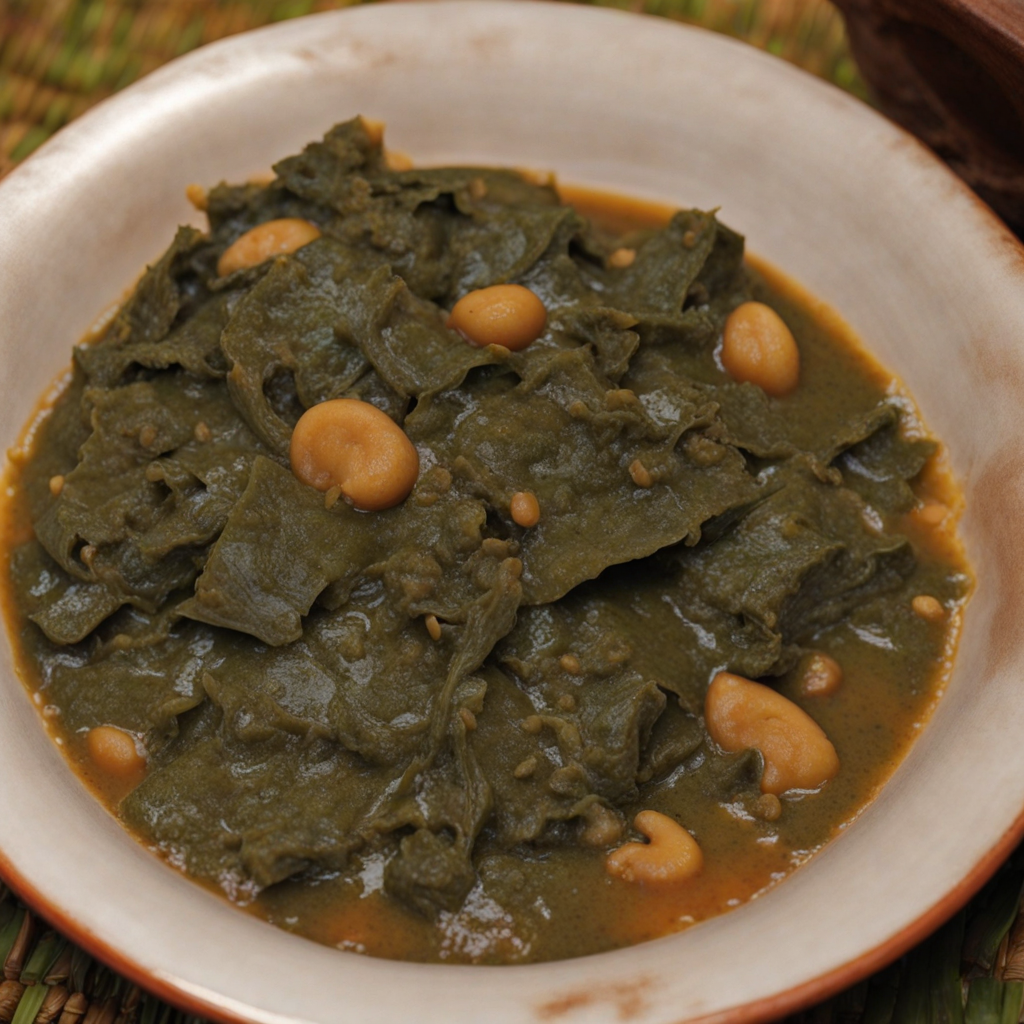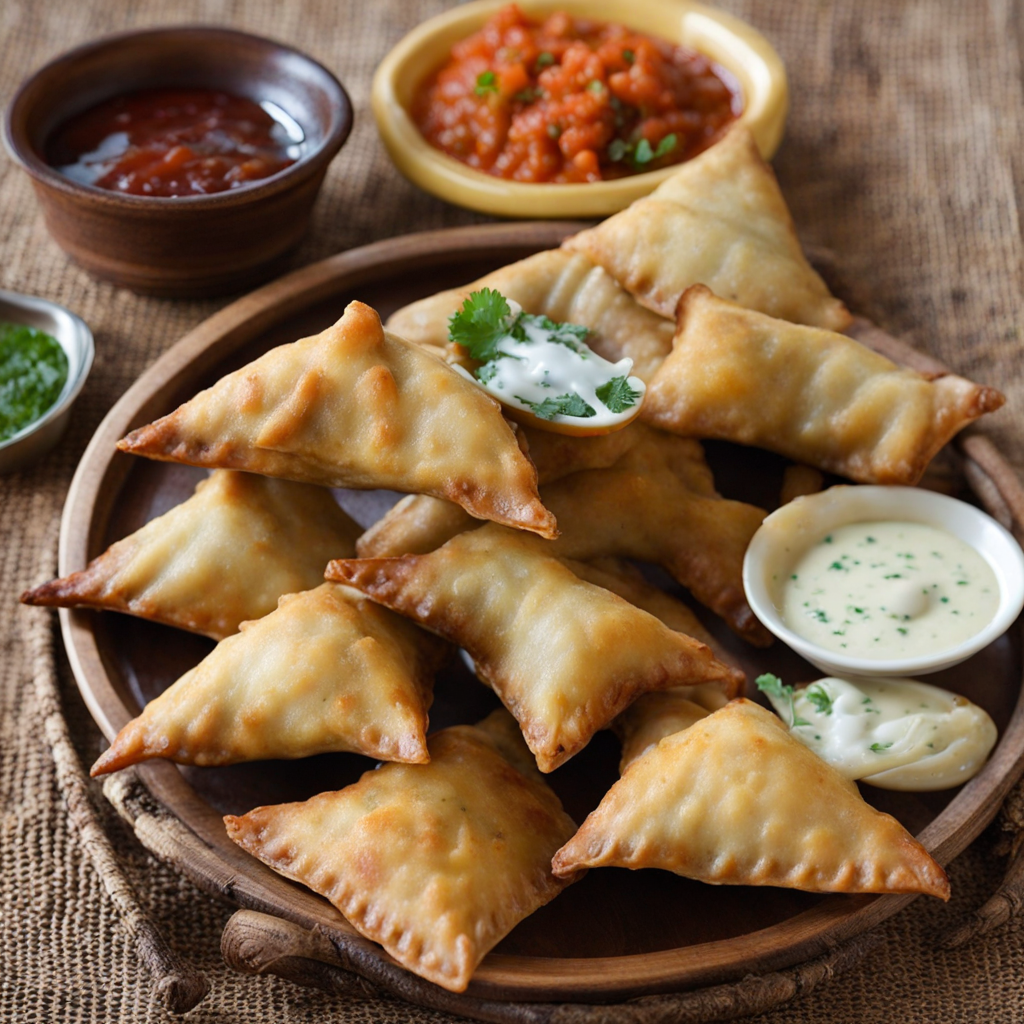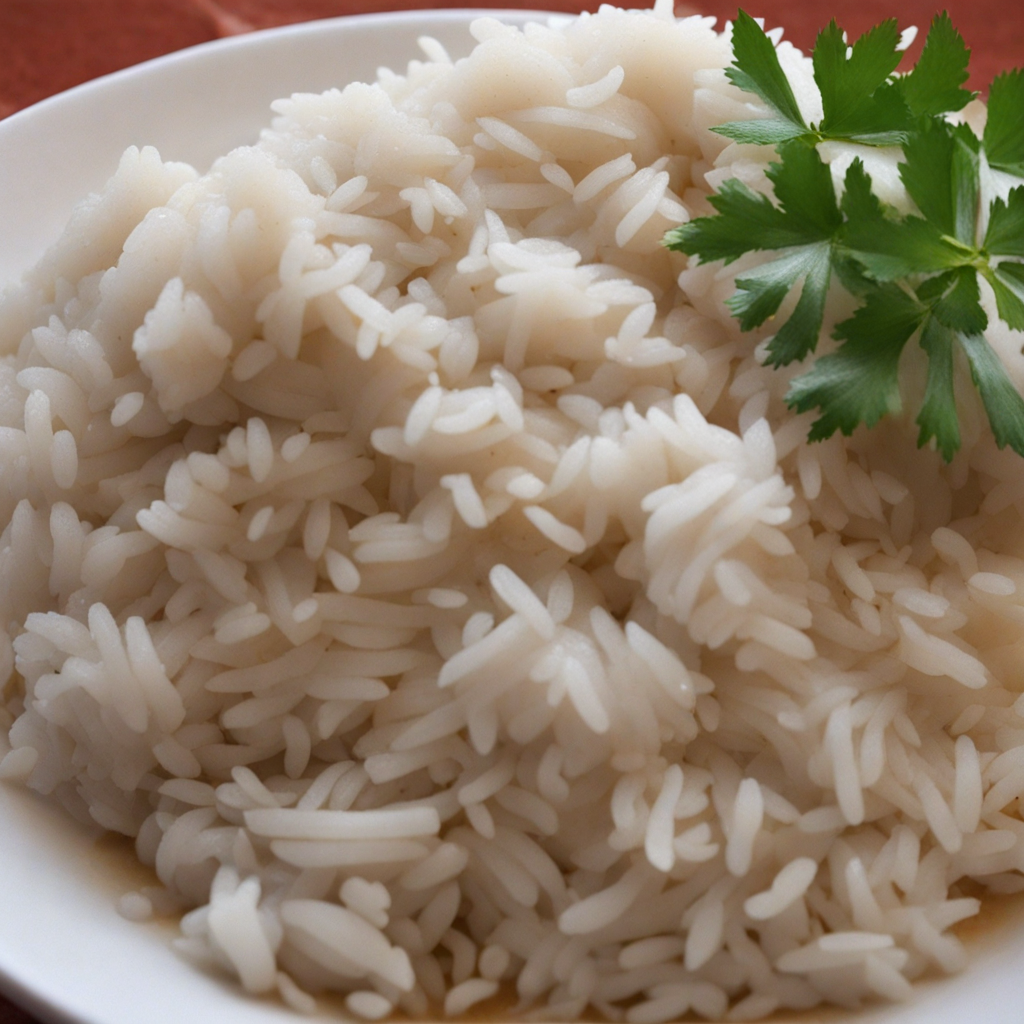Matapa
Matapa is a traditional Mozambican dish that showcases the rich and vibrant flavors of the region. At its core, Matapa is made from cassava leaves, which are cooked down to create a tender and flavorful base. These leaves are typically combined with ground peanuts, coconut milk, and a variety of spices, resulting in a creamy and earthy dish that offers a delightful contrast of textures. The nutty undertones from the peanuts meld beautifully with the richness of the coconut milk, while the spices add warmth and depth to each bite. In addition to its main ingredients, Matapa can be enhanced with the addition of fish or meat, making it a versatile dish that can cater to various tastes. The fish commonly used is often dried or salted, providing a savory punch that complements the natural sweetness of the coconut. When served alongside rice or a starch like maize, Matapa transforms into a satisfying and wholesome meal that reflects the culinary traditions of Mozambique. What makes Matapa truly special is not only its flavor but also its cultural significance. Often prepared for family gatherings or festive occasions, it embodies the communal spirit of Mozambican dining. The dish is a testament to the region's agricultural heritage, utilizing locally sourced ingredients that showcase the lush landscapes of Mozambique. For those seeking to explore new tastes, Matapa offers a unique glimpse into the heart of Mozambican cuisine, inviting adventurous eaters to savor each mouthful of this delicious and comforting dish.
How It Became This Dish
Matapa: A Culinary Journey Through Mozambique's Cultural Heritage Matapa, a dish that embodies the rich culinary tapestry of Mozambique, is more than just food; it is a symbol of the nation’s history, culture, and resilience. This traditional dish, primarily made from cassava leaves, peanuts, and coconut milk, has roots that delve deep into the region's agricultural practices and social customs. To understand Matapa is to take a journey through Mozambique's past, exploring its origins, cultural significance, and evolution over time. Origins of Matapa The origins of Matapa can be traced back to the indigenous peoples of Mozambique, particularly the Bantu-speaking communities who have inhabited the region for centuries. Cassava, a staple crop throughout Africa, has been cultivated in Mozambique since at least the 16th century, introduced by Portuguese explorers and traders who were drawn to the region’s potential for agriculture. The plant thrived in Mozambique’s tropical climate, becoming a critical food source for local populations. Peanuts, another key ingredient in Matapa, also have a long history in Africa. While they are believed to have originated in South America, they were brought to the continent by Portuguese traders and have since integrated into many African cuisines. The combination of cassava leaves, peanuts, and coconut milk reflects the agricultural abundance of Mozambique and the interplay of indigenous and colonial influences on its culinary practices. Cultural Significance Matapa holds a significant place in the cultural identity of Mozambique. It is often associated with communal gatherings, celebrations, and family meals, symbolizing unity and togetherness. Traditionally, Matapa is prepared during special occasions such as weddings, festivals, and harvest celebrations, where the preparation of food becomes a communal activity that strengthens social bonds. The dish is also representative of the matrilineal societies found in many parts of Mozambique, where women play a central role in agricultural production and food preparation. In these communities, the preparation of Matapa is often passed down through generations, with mothers teaching daughters the art and nuances of cooking this beloved dish. The process of making Matapa often involves multiple women coming together, sharing stories and laughter as they prepare the ingredients, thereby reinforcing their communal ties. Matapa is not merely a dish; it is a cultural artifact that reflects the history and customs of the Mozambican people. Its ingredients speak to the agricultural practices of the region, while the act of sharing the dish fosters a sense of community and belonging. Moreover, Matapa is often served with other staple foods, such as rice or xima (a cornmeal porridge), making it a central component of the Mozambican diet. The Evolution of Matapa Over Time As Mozambique underwent significant political, social, and economic changes, so too did Matapa. The country’s colonial history, marked by Portuguese rule, brought about the introduction of new ingredients and culinary techniques. For instance, the use of coconut milk in Matapa is a reflection of Portuguese culinary influence, as coconuts are abundant along Mozambique’s coastline. This integration of new flavors enhanced the richness of the dish, making it more versatile and appealing to a broader audience. Following Mozambique's independence in 1975, the country faced numerous challenges, including civil war and economic difficulties. During this tumultuous period, traditional food practices were often disrupted, and many families struggled to access ingredients. However, the resilience of the Mozambican people shone through as they adapted their culinary practices to cope with these changes. Matapa became a symbol of endurance, with families finding creative ways to prepare the dish using whatever ingredients were available, often substituting or omitting certain elements while maintaining the essence of the dish. In recent years, there has been a resurgence of interest in traditional Mozambican cuisine, including Matapa. As globalization and tourism have increased, chefs and home cooks alike have sought to revive and celebrate their culinary heritage. Today, Matapa is not only enjoyed in homes across Mozambique but has also found its way onto restaurant menus, showcasing the dish to a wider audience. Modern interpretations of Matapa often include variations that reflect contemporary tastes and dietary preferences. Some chefs experiment with the addition of proteins, such as fish or chicken, while others explore vegetarian or vegan adaptations, emphasizing the health benefits of the dish’s primary ingredients. This evolution demonstrates the adaptability of Matapa, allowing it to remain relevant in a changing culinary landscape while still honoring its traditional roots. Conclusion Matapa is more than just a flavorful dish; it is a narrative woven into the fabric of Mozambique’s cultural identity. From its origins in the agricultural practices of indigenous communities to its role in communal gatherings and celebrations, Matapa has been a steadfast symbol of resilience and unity. As Mozambique continues to navigate the complexities of modern life, Matapa serves as a reminder of the country’s rich history and the importance of preserving culinary traditions. Today, as both a cherished family recipe and a dish that graces the tables of restaurants, Matapa stands as a testament to the enduring spirit of the Mozambican people. It invites all who partake in it to explore the stories behind each ingredient and to appreciate the cultural significance of food as a means of expressing identity, heritage, and community. Through Matapa, the essence of Mozambique is not only preserved but celebrated, allowing future generations to connect with their roots and share in the collective history of their nation.
You may like
Discover local flavors from Mozambique







